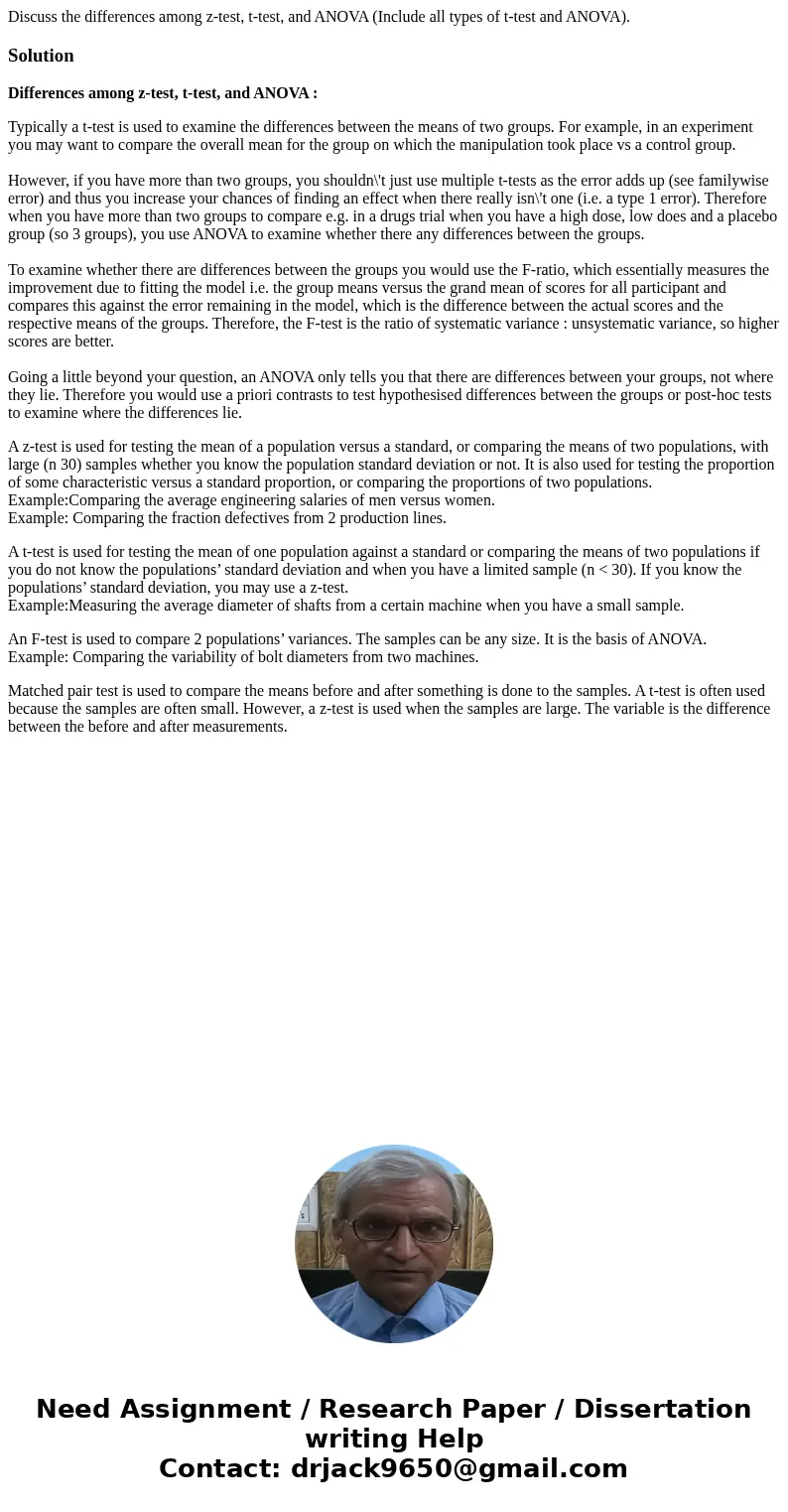Discuss the differences among ztest ttest and ANOVA Include
Discuss the differences among z-test, t-test, and ANOVA (Include all types of t-test and ANOVA).
Solution
Differences among z-test, t-test, and ANOVA :
Typically a t-test is used to examine the differences between the means of two groups. For example, in an experiment you may want to compare the overall mean for the group on which the manipulation took place vs a control group.
However, if you have more than two groups, you shouldn\'t just use multiple t-tests as the error adds up (see familywise error) and thus you increase your chances of finding an effect when there really isn\'t one (i.e. a type 1 error). Therefore when you have more than two groups to compare e.g. in a drugs trial when you have a high dose, low does and a placebo group (so 3 groups), you use ANOVA to examine whether there any differences between the groups.
To examine whether there are differences between the groups you would use the F-ratio, which essentially measures the improvement due to fitting the model i.e. the group means versus the grand mean of scores for all participant and compares this against the error remaining in the model, which is the difference between the actual scores and the respective means of the groups. Therefore, the F-test is the ratio of systematic variance : unsystematic variance, so higher scores are better.
Going a little beyond your question, an ANOVA only tells you that there are differences between your groups, not where they lie. Therefore you would use a priori contrasts to test hypothesised differences between the groups or post-hoc tests to examine where the differences lie.
A z-test is used for testing the mean of a population versus a standard, or comparing the means of two populations, with large (n 30) samples whether you know the population standard deviation or not. It is also used for testing the proportion of some characteristic versus a standard proportion, or comparing the proportions of two populations.
Example:Comparing the average engineering salaries of men versus women.
Example: Comparing the fraction defectives from 2 production lines.
A t-test is used for testing the mean of one population against a standard or comparing the means of two populations if you do not know the populations’ standard deviation and when you have a limited sample (n < 30). If you know the populations’ standard deviation, you may use a z-test.
Example:Measuring the average diameter of shafts from a certain machine when you have a small sample.
An F-test is used to compare 2 populations’ variances. The samples can be any size. It is the basis of ANOVA.
Example: Comparing the variability of bolt diameters from two machines.
Matched pair test is used to compare the means before and after something is done to the samples. A t-test is often used because the samples are often small. However, a z-test is used when the samples are large. The variable is the difference between the before and after measurements.

 Homework Sourse
Homework Sourse